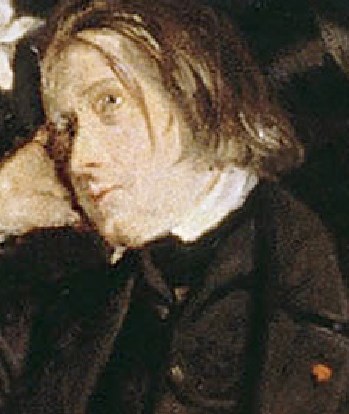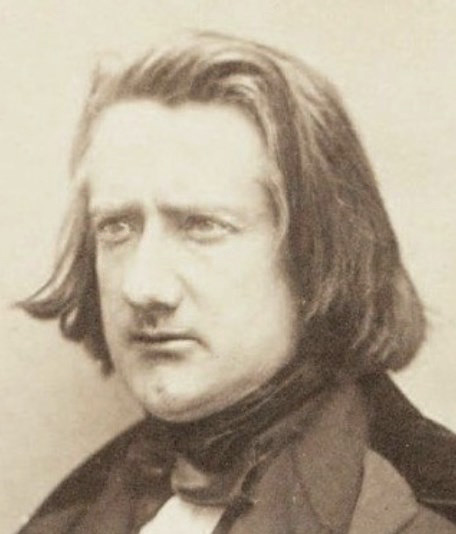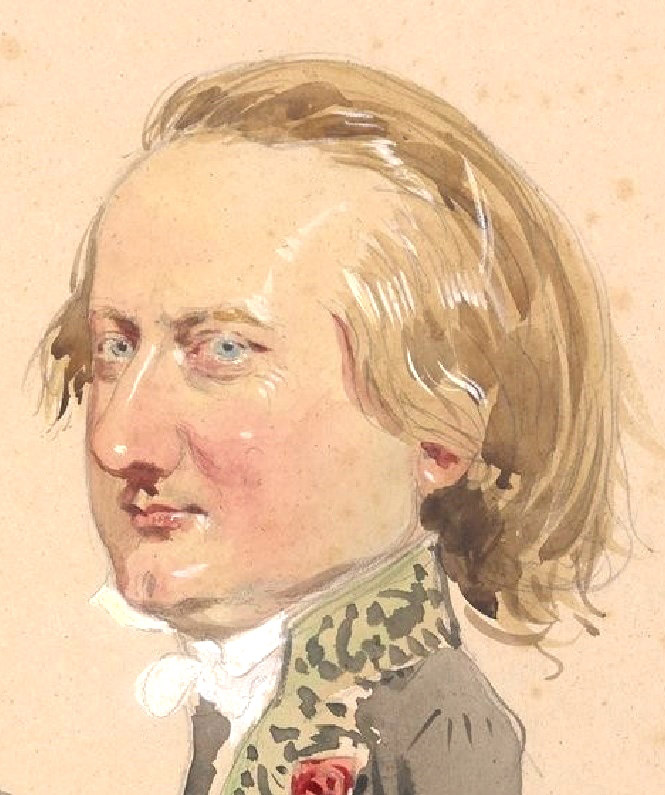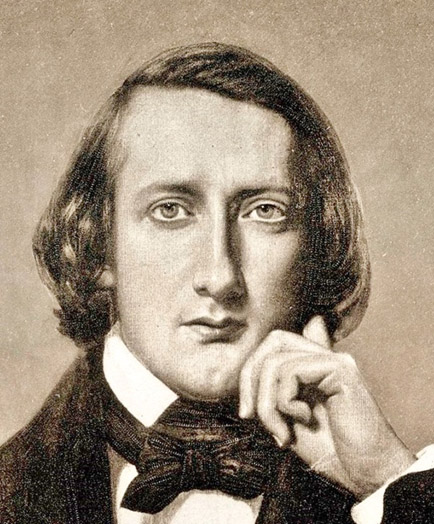Victor Regnault (1810 – 1878), academic, photographer, chemist
1st image: Soirée; 2nd: autoportrait (1853); 3rd: caricature by Giraud (1853); 4th: by Heim (1856); 5th: painting by Amaury Duval (1838); (Alternative: Liszt)
Victor Regnault was a famous academic during the Second Empire. His name is even inscribed at the Eiffel Tower. Working with renowned scientists like Gay-Lussac, Von Liebig, and Daguerre, inventor of photography, his name would have been equally famous today if he had had less misfortune in his life.
His father died in Russia when Victor was two, his mother died six years later.
He failed the exam for the Ecole Polytechnique because he was too ill.
His left eye was severely damaged when it was hit by a piece of glass during the rebellion in 1832.
He was in coma for twelve days after a four-meter drop from the roof of his Sèvres laboratory in 1856.
His wife died in 1866, and his young artistic son Henri Regnault (1843 - 1871), considered one of France’s most promising painters (and promoted and revered by Troyon40b), was killed by a Prussian bullet in January 1871. Saint-Saens dedicated his Marche héroïque to Henri.
Another blow happened that year when his laboratory burnt down in the war. It held a decade of his inventions and notes on gas measurement tools, hygrometers, and examples of his photographic studies which he started in 1839. He suffered from a stroke in 1873 and lived in an infirmary until his death.
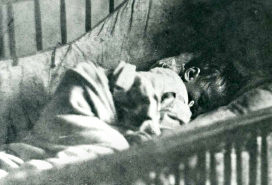
There were also good moments:
he was raised with his sister by the loving Clément-Duval family in Paris, and married their daughter Clémence.
Amaury Duval44a, his cousin, sitting close to him in the painting, painted his portrait in 1838.
He managed to regain access to the Ecole Polytechnique by taking another exam far away from Paris, and graduated with highest marks.
He became member of the academy of science when he was only twenty-nine, and professor at the Polytechnique when Gay-Lussac retired in 1840.
With photography invented in 1839, Regnault was an early adopter who experimented with various techniques (daguerreotype and calotype). Regnault used the latter type, creating negatives that allowed for multiple copies (unlike the one-off positive images with daguerreotype).
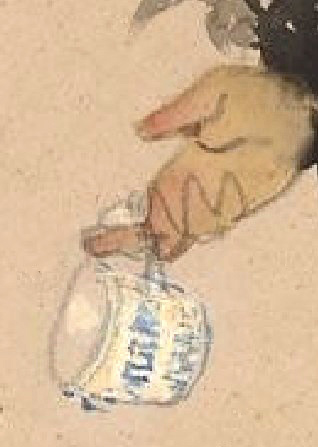
In 1852, he became administrator of the Imperial Porcelain factory in Sèvres. At this factory, painters like Isabey52, Troyon, and Renoir stared their careeer.
Although not an original thinker like Gay-Lussac, Von Liebig, or Daguerre, he was renowned for his ideas to test chemical processes, for the equipment he made for this purpose, and for his relentless and meticulous experiments to obtain reproduceable data.
Regnault likely presented his photography experience at one of de Nieuwerkerke's16 vendredi-soirées in 1853, when the emperor had granted him the position of director at the Sèvres (video) porcelain factory and visited him there with the empress.
The Message du Midi wrote: "At the factory, the Emperor pointed to a dilapidated old carriage drawn by a horse with a sad looking neckline. 'Who rides that wreck?'
'What you call a wreck,' replied M. Regnault, 'is the carriage of the director of your imperial factory, it is my carriage, Sire.'
The next day, when Regnault ordered his servant to harness his carriage to go to Paris, he arrived leading by the hand a beautiful horse harnessed to a delicious landau. When the director asked: 'Why did you hire this carriage and this horse?' the servant handed him a letter by the emperor explaining the reason for this pleasant surprise.
Eugène Giraud11 drew Regnaults caricature at the après-soirée, showing Regnault dressed in his Academy costume, with a Sèvres porcelain cup.
